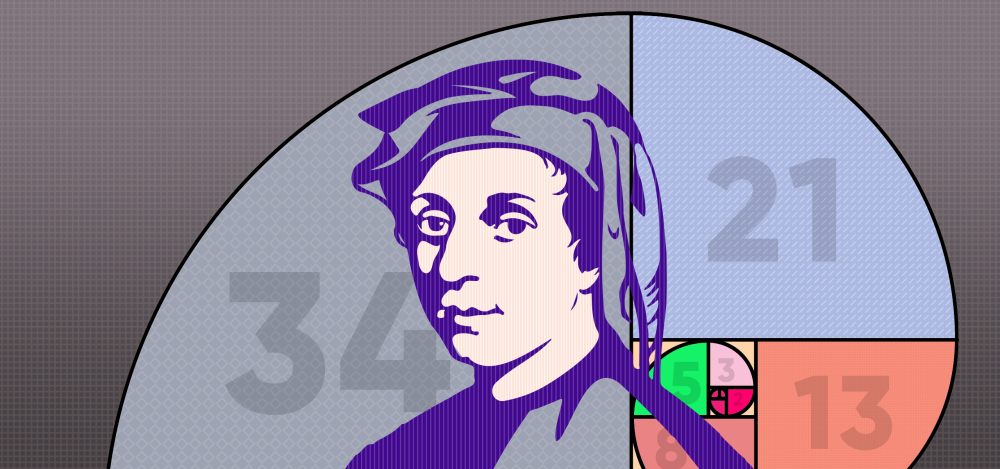Fibonacci Sequence Facts
The Fibonacci sequence is a famous mathematical formula. Every number within the series contains the sum of the two numbers it precedes. Therefore, the sequence tends to go 0, 1, 1, 2, and then 3, 5, 8, and continues that way. In many undergraduate courses and high school, it’s called nature’s secret or universal rule. It governs everything’s dimensions, even seashells and the Great Pyramid at Giza. Most people know nothing about it, so it is important to focus on the fibonacci sequence facts.
How Was the Fibonacci Sequence Discovered?
What’s the story behind the Fibonacci sequences?
Most sources say it was discovered by Leonardo Fibonacci, who was an Italian mathematician born in 1170. He was called Leonardo of Piza, and historians thought up the nickname Fibonacci at the turn of the 19th century to distinguish him from another Leonardo.
Who Invented the Fibonacci Sequence?
Still, Leonardo Pisano didn’t invent this sequence. Some ancient Sanskrit texts mentioned the system first, and they predate his birth by many centuries. However, Leonardo did publish a tome called Liber Abaci, which was a mathematics ‘cookbook’ to help people do a variety of calculations. It was primarily written for trademen and could help them tract their losses, profits, and remaining loan balances, among other things.
In one part of the book Liber Abaci and the most popular of interesting fibonacci sequence facts, he talked about a pair of rabbits and created a math problem based on the rabbits. If you have a male and female, they are going to mature and have a litter after one month. In that litter is another male and female bunny. In the second month, they reproduce, and another male/female combination is born. After a year, there are many pairs and a total of 144 rabbits. The formula to get that answer is called the Fibonacci sequence. Leonardo brought his Fibonacci number sequence to the Western world and mentioned the rabbits a few times, but then quit. The Fibonacci series was then forgotten again until the mid 19th century when he worked out more of the Fibonacci patterns and properties. Then, Edouard Lucas, a French mathematician, officially called it the Fibonacci sequence back in 1877.
Why are the Fibonacci Numbers so Important?
Of course, the Fibonacci numbers are very important for history. Still, even if you leave that aside for now, the primary reason why the Fibonacci series is essential is that it’s one of the closest approximations to logarithmic spirals in integers. The spiral series follows the same rules that are in place for the Fibonacci numbers, where the next number is the sum from the previous two numbers.
Generally, people are interested in the geometric series because they appear frequently in nature. We’re going to talk about that later, though. Leonardo Fibonacci chose to focus on patterns, which are all around us in math, nature, and the everyday world. Of course, some people decide not to see it. Also, you have to realize that there are no patterns in nature and only in our minds. However, that is why the Fibonacci number sequence is so important. It helps humans handle number theory in a way that their brains can handle.
The Fibonacci numbers have an important characteristic, also. For one, ratios between any number within the series of numbers, and the previous one tends toward making a well-defined value. In a sense, this is called the golden ratio, and it often occurs in nature. Leonardo Fibonacci was able to illustrate this, though he wasn’t particularly worried about recreational math and didn’t assign it much importance.
What Is the Fibonacci Sequence in Nature?
When you observe plants, you can see the geometry within them. Also, fruits, flowers, and all aspects of nature have recurrent forms and structures. For example, the Fibonacci sequence plays a significant role in phyllotaxis, which is the study of leaves, flowers, branches, and seeds, as well as their arrangements. This helps establish regular patterns.
If you take a look at a sunflower, you can see the swirling effect of the middle. This is a pattern, and the spirals that are formed by the flowers and seeds contain the numbers from the sequence. That is true for cauliflower, broccoli, daisies, and sunflowers.
Generally, when you use the golden ratio, you get Fibonacci numbers as a result. Often, when the Fibonacci number is higher, it’s closer to 1.618, which is the golden ratio. Sometimes, this ratio is called a divine proportion because it happens frequently in the natural world. For example, the petals on any flower are often Fibonacci numbers. Since it happens all the time, it is still used in the modern world. It’s well known to be utilized throughout your life, even if you don’t stop to think about it. Though it was first brought up in Europe, it has spanned the world because of its ease of use and ability to answer and explain so many things.
Next to that the Fibonacci sequence is used in the technical analysis of markets and can be used for automated fibonacci trading.
Conclusion
When it comes to the Fibonacci sequence facts, there is little else that can be done. It doesn’t need to be changed because it provides everyone with the information they need to see patterns within nature and other aspects of life. Of course, many people write articles about it all the time, but even when it doesn’t directly relate to the numbers themselves, it is still used frequently. These interesting facts can help you focus on the numerals and thank Leo of Pisa whenever you use the formula.
-

You Don’t Need a Trading Style. You Need an Edge.
-

Consistency Isn’t the Goal—It’s the Outcome
-

What 2 Quadrillion Data Points Told Us
-

Math and Physics-Based Trading in Any Market Condition
-

Do not worry about anomalies
-

Consistency should not be the goal. Consistency should be the result.
-

Stop canceling fridays
-

The Elliott Wave Forecast is Subjective, Bias Driven And Backwards looking
-

Finding patterns in market data
-

Taking profits through the trade timeline

